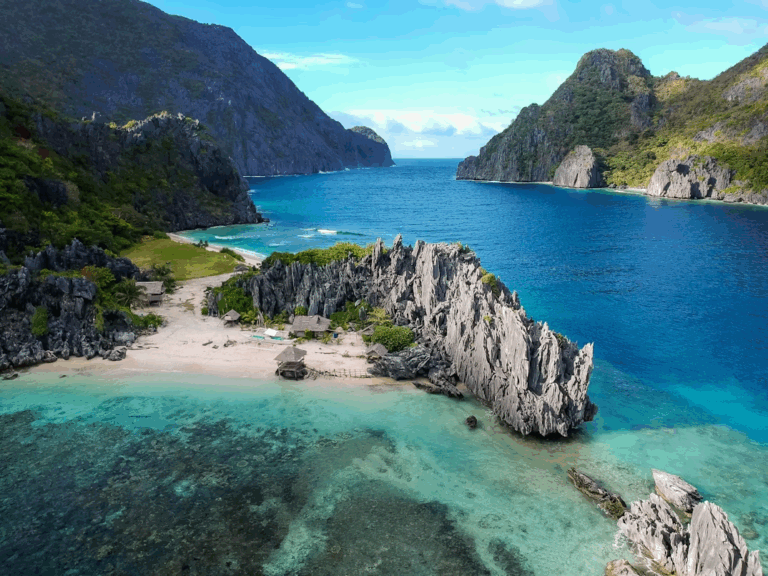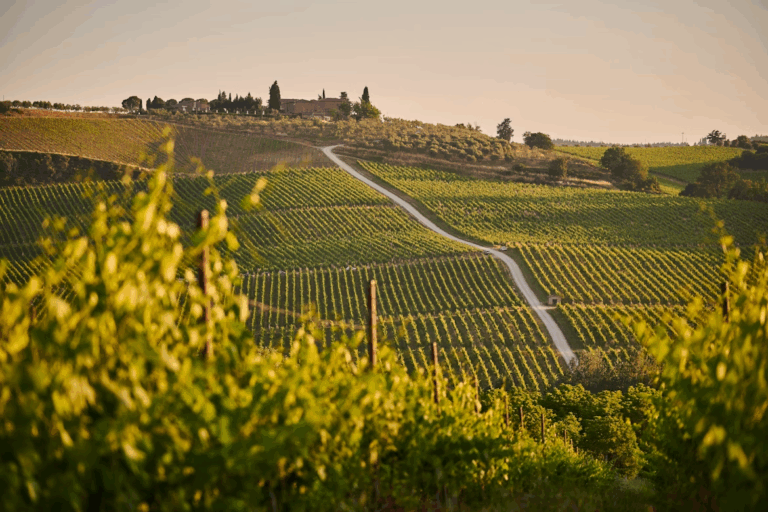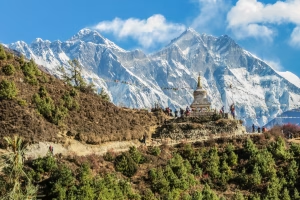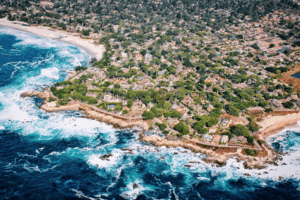Discover the toughest ultra-distance bikepacking routes, from the Tour Divide to RAAM, plus expert tips on training, gear, and endurance strategy.
Have you ever wondered what it would be like to ride day in and day out, pushing back against fatigue, bad weather, and heartless terrain? I’ve been years following (and occasionally even riding) ultra-distance cycling tours and can tell you that these adventures are as much a climax of physical and mental suffering as they are an excellent exercise of self-discovery.
Ultra-distance cycling pushes cyclists to their limits—and then asks for more. In this comprehensive guide, we’ll explore the world’s most challenging cycling tests that appeal to athletes who desire to test their endurance, willpower, and mental strength.
What Is Ultra-Distance Cycling?
Let us begin by establishing what constitutes “ultra-distance” cycling. Generally, ultra-distance cycling involves continuous riding over more than 200 miles (320 km) of distance, often with minimal or no support and even over multiple days or weeks.
Such events most commonly fall into one of the following categories:
– Self-supported races when riders carry everything with them, including gear and supplies
– Organized ultra-events with aid stations and minimal assistance
– Personal challenges on established long-distance routes
– Ultra-endurance stage races with deliberate rest periods
It is not just the outrageous distances that make ultra-distance cycling distinct from typical cycling events—it’s the entire package of challenge: sleep management, nutrition planning, mental toughness, and ability to be flexible in the face of unexpected setbacks.
The World’s Most Challenging Ultra-Distance Cycling Races
1. The Tour Divide
Distance: 2,745 miles (4,418 km)
Elevation Gain: 200,000+ feet (60,960+ meters)
Location: Canada to Mexico along the Continental Divide
Format: Self-supported, no outside assistance
The Tour Divide is perhaps the ultimate test of bikepacking endurance. Cycling the Great Divide Mountain Bike Route from Banff, Canada, to the US-Mexico border, riders traverse the spine of North America through remote wilderness, high mountain passes, and harsh desert terrain.
Why it’s so challenging:
– Radical remoteness with 100+ miles of no services
– Uncertain mountain weather like snowstorms (in summer too)
– Barbaric roads requiring technical riding proficiency
– Elevations above 11,000 feet of relentless climbing
Record holder Mike Hall completed the route in a mind-boggling 13 days, 22 hours, and 51 minutes in 2016—posting over 190 miles per day on some of North America’s roughest terrain.
2. The Transcontinental Race
Distance: Approximately 2,500 miles (4,000 km) based on available route options
Location: Europe (annual start/finish points vary)
Format: Self-guided with compulsory checkpoints
The Transcontinental Race takes place from west to east (or east to west) through Europe, with cyclists determining their own route between compulsory checkpoints. The advantage this race has over others is the strategic element—opponents must make crucial decisions about route selection, balancing distance, altitude, road condition, and weather.
Challenges include:
– Harsh altitude in Alpine passes
– Traveling through a number of countries with different road conditions and languages
– Extreme weather conditions from hot to mountain storms
– Minimal sleep as it covers 250+ miles every day
The practice of strategic planning, physical endurance, and sleep deprivation renders the Transcontinental one of the greatest challenges of cycling.
3. Race Across America (RAAM)
Distance: 3,000+ miles (4,800+ km)
Elevation Gain: 175,000+ feet (53,340+ meters)
Location: West to East across the United States
Format: Supported race with time cuts
Typically regarded as the standard by which ultra-endurance cycling events are measured, RAAM covers the entire continental United States. While self-supported events do not include support crews, RAAM does permit them, but this doesn’t diminish how harsh it is. The riders have to ride the distance in 12 days for solo riders, so 250-350-mile minimum daily distances with hardly any rest.
What makes RAAM particularly demanding:
– Intense time pressure with lost time cuts penalties
– Harsh weather extremes with desert heat and mountain cold
– Sleep deprivation (leading riders sleep only 90 minutes a day)
– Cycling across three major mountain ranges and vast plains
The solo cyclist completion rate in RAAM is around 50%, with the majority of them quitting due to physical conditions, exhaustion, or lost time cuts.
4. The Silk Road Mountain Race
Distance: About 1,120 miles (1,800 km)
Elevation Gain: 100,000+ feet (30,480+ meters)
Location: Kyrgyzstan
Format: Self-supported with checkpoints
Though shorter than some other ultra-events, the Silk Road Mountain Race compensates with extreme terrain and severe conditions. Located in the remote mountains of Kyrgyzstan, riders encounter high-altitude passes, dirt roads, and temperatures from blistering days to below-freezing nights.
Specific challenges include:
– Isolated mountainous country topping out at over 13,000 feet
– Few resupply options in remote villages
– Primitive roads often rendered impassable by weather
– Wild temperature fluctuations over the course of a single day
The creator of this event, Nelson Trees, built this one specifically as one of the world’s most challenging bikepacking events—a feat most finishers would confirm he accomplished.
5. Indian Pacific Wheel Race
Distance: 3,400 miles (5,500 km)
Where: Australia (Sydney to Perth)
Type: Self-supported, coast-to-coast
From the west coast of Australia to the east coast, the Indian Pacific Wheel Race traverses some of the most isolated terrain on Earth. The riders have to ride through the sheer emptiness of the Nullarbor Plain before tackling the challenging mountain climbs of the Australian Alps.
Why it is particularly challenging:
– The 90-mile straight road of the Nullarbor—the world’s longest straight road
– Total isolation with hardly any water points
– Intense desert weather with temperatures of over 100°F (38°C)
– Australian wildlife hazards such as road trains (monstrous trucks)
Note: The event has been put on hold since 2017 following the sad death of ultra-cycling legend Mike Hall competing in the race.
Training for Ultra-Distance Cycling Events
Training for ultra-distance events involves a systematic plan that is more than just traditional cycling training. Drawing on the experiences of well-known ultra-cyclists, here’s the way to establish the required physical and mental base:
Physical Preparation
Ultra-distance training differs significantly from conventional cycling training. Instead of prioritizing power and velocity, successful ultra-distance cyclists stress:
1. Developing aerobic endurance: Long, steady state rides at low to moderate intensity to create fat-burning proficiency
2. Saddle time: Weekly recurring rides of increasing length (6, 8, 12, 24 hours)
3. Long day back-to-back: Consecutive long rides to simulate multi-day fatigue
4. Position adaptation: Conditioning the body to remain in riding position for extended hours
5. Specificity training: Mimicking race conditions of terrain, weather, and equipment
Top ultra-cyclists recommend a progressive buildup over 6-12 months, gradually increasing weekly volume while incorporating specific training blocks that simulate race conditions.
Mental Preparation for Ultra-Distance Challenges
The psychological component of ultra-cycling is arguably more important than physical fitness. Successful strategies include:
1. Visualization techniques: Mentally rehearsing challenging scenarios and your responses
2. Compartmentalization: Breaking the enormous challenge into manageable segments
3. Mindfulness exercises: Developing the ability to stay present rather than getting bogged down
4. Adversity training: Training specifically under adverse circumstances to become resilient
5. Sleep deprivation practice: Gradual exposure to sleep deprivation to acquire coping mechanisms
According to Lael Wilcox, an old-time ultra-cyclist winner of the Tour Divide and many other races: “The physical training gets you to the start line, but it’s your mental approach that gets you to the finish.”
Critical Components of Ultra-Distance Cycling
Equipment that trims reliability from the balance equation for comfort, weight, and function is essential for ultra-distance cycling. From expert advice, the following performs for successful ultra-distance cyclists:
The Bike
The perfect ultra-distance bicycle differs from event to event but generally favors:
– Reliability over weight: Failure of components in remote places can finish a race
– Comfort geometry: Positions that can be held for days, not hours
– Plenty of tire clearance: For different terrain conditions
– Multiple hand positions: To prevent nerve damage and overuse injury
– Stout wheel builds: Often with more spokes for durability
For events like the Tour Divide, suspension seatpost gravel bikes or hardtail mountain bikes prevail, while road-oriented events like RAAM are typically prevailed over by aerodynamic endurance road bikes or recumbents.
Lighting and Power
With the riding extended into night hours, lighting and power control become essential:
– Dynamo hub systems: For clean power generation
– Multiple light options: Main and auxiliary systems
– Power banks: Of adequate capacity for electronics between recharge opportunities
– Solar charging options: For long self-sufficiency sections
Navigation and Safety
Ultra-distance riders typically employ:
– GPS devices: With long battery life and solid routing
– Emergency communication: Satellite messengers like Garmin InReach
– Backup navigation: Paper maps or secondary devices
– Visibility elements: Reflective materials and additional lighting
Nutrition and Hydration Strategies
Exceptional nutritional demands are placed by ultra-distance cycling, with riders taking in 5,000-10,000 calories daily. Efficient fueling techniques include:
Nutrition Principles
1. Caloric intake: Aiming for 250-400 calories of active riding per hour
2. Macronutrient balance: More carbohydrates at the start, then more fats and proteins later in the event
3. Focus on real food: Primarily using standard foods, rather than sports nutrition foods
4. Planned variety: Planning for “flavor fatigue” with variety
5. Convenient, calorie-dense foods: Foods that yield maximum nutrition with minimum weight/volume
Hydration Strategies
1. Normal fluid intake: Typically 500-1000ml per hour based on conditions
2. Electrolyte replacement: Replacement of sodium, potassium, and magnesium lost through sweating
3. Monitoring hydration: Monitoring by checking urine color and output
4. Informed water carrying: Balancing weight concern against availability along route
Ultra-cycling legend Kristof Allegaert, a several-time winner of the Transcontinental Race, notoriously survives on a combination of fast convenience store foods and sit-down meals, stressing that consuming “real” food has both physical and psychological advantages during extreme exertions.
Common Mistakes in Ultra-Distance Cycling
Even seasoned cyclists commit fatal mistakes when preparing for ultra-distance events. Here are the most common pitfalls to avoid:
1. Too hard a start: Initial excitement surge too frequently causes unproductive initial pace
2. Poor sleep strategy: Not planning a productive sleep strategy prior to decision-making is thwarted by tiredness
3. Small problems neglected: Subtle equipment, diet, or body position faults that add up over time
4. Not geared up for weather extremes: Ineffective gear for weather extremes
5. Too little route research: Overestimating terrain difficulty or resupply logistics
6. Mental inflexibility: Inability to accommodate where conditions call for plan modification
7. Neglecting comfort: Exchanging speed or weight savings for uncomfortable longevity
Ultra-cyclist Jay Petervary opines thus: “The riders who finish aren’t always the strongest—they’re the ones who solve problems efficiently and adapt to changing conditions.”
Rest and Recovery During Multi-Day Adventures
Resting well often means winning ultra-events. Finding balance in the minimum required sleep with sustainable performance includes some tactical tricks:
Sleep Strategies
Successful ultra-cyclists often employ one of various sleep strategies:
– Biphasic pattern: One big block of sleep (2-4 hours) with frequent naps
– Uberman technique: Multiple 20-30 minute naps distributed over 24 hours
– Sleep banking: Bank as much sleep as possible ahead of the event to build reserves
– Strategic caffeine use: Caffeine consumed at strategic points to remain awake when necessary
Recovery Strategies
Apart from sleep, recovery strategies are:
– Strategic stops: Consolidating required tasks (eating, navigation evaluation, change of clothes) to maximize performance efficiency
– Altitude management: Scheduling sleep at lower altitudes where possible to guarantee maximum oxygen availability
– Body maintenance: Healing hotspots and potential injuries before race-ending status
– Mental recovery: Brief meditative exercises or gratitude for nature to restart mental fatigue
Balancing Safety and Risk
Ultra-distance cycling is inherently about risk management, especially in remote areas. Experienced cyclists recommend:
1. Redundant safety systems: Multiple ways to summon help if needed
2. Weather monitoring: Continuous tracking of changing conditions
3. Risk assessment protocol: Personal checklist for analyzing risky scenarios
4. First aid skills: Training applicable to likely cycling injuries
5. Acquisition of local knowledge: Familiarity with region-specific hazards prior to arrival
As much as testing yourself is core to ultra-cycling, the most seasoned riders understand when continuing to press forward moves from testing to hazardous.
Choosing Your First Ultra-Distance Event
For the aspiring ultra-distance cyclist, it is crucial to select an appropriate first event. Consider:
1. Supported vs. self-supported format: Starting with events that offer some support structure
2. Terrain familiarity: Choosing routes that have conditions you have trained in
3. Distance progression: Beginning with shorter ultra-events (200-300 miles) before moving to multi-day endeavors
4. Established events: Selecting established events with tracking and safety features
5. Weather considerations: Avoiding bad weather for your first experience
Excellent beginner events include:
– The Dirty Kanza 200 (now known as Unbound Gravel 200)
– The Mid South (previously Land Run 100)
– Other 400-600km randonneuring events
– 24-hour cycling challenges
The Ultimate Test of Human Endurance
Ultra-distance bicycle rides provide arguably the most genuine test of human endurance available in sports. They combine physical power, mental resilience, logistical complexity, and intellectual strategy in a painfully challenging bundle.
Why are cyclists drawn to such heartless temptations? beyond the apparently obvious appeal of demonstrating individual capabilities, many ultra-cyclists describe a life-changing experience—moments of realization and connection that become accessible after surviving multiple cycles of exhaustion and suffering.
As ultra-cycling legend Mike Hall once explained: “These races strip away everything unnecessary until you discover what you’re truly capable of.”
Whether you’re considering your first ultra-distance ride or just marvel at the extreme boundaries of human endurance, these massive cycling challenges demonstrate what is possible when determination is paired with proper preparation.
Are you going to attempt an ultra-distance cycling race, or have you attempted one? What about these brutal challenges interests you most?







